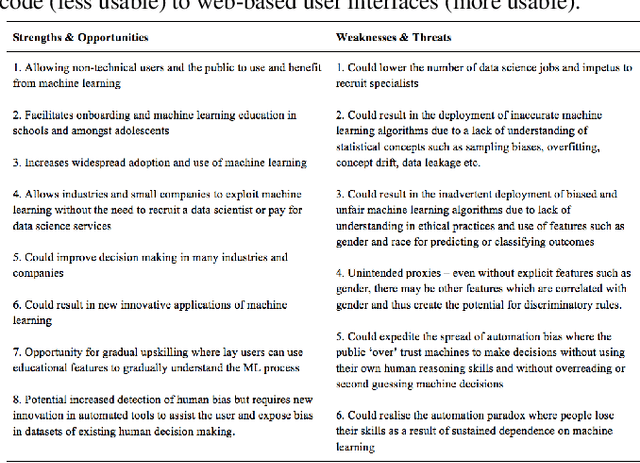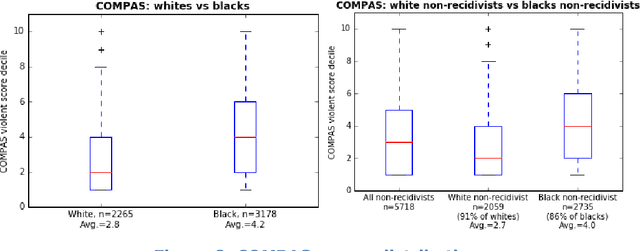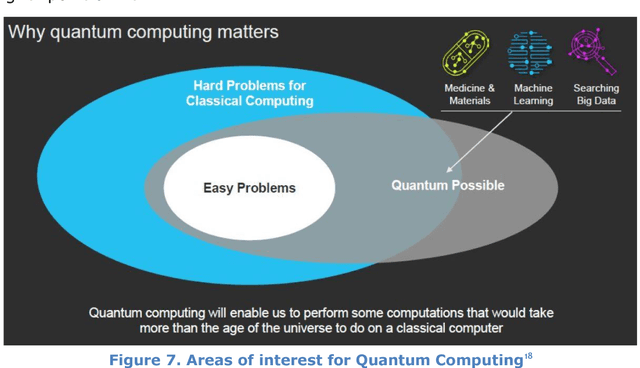Ansgar Koene
Democratisation of Usable Machine Learning in Computer Vision
Feb 18, 2019

Abstract:Many industries are now investing heavily in data science and automation to replace manual tasks and/or to help with decision making, especially in the realm of leveraging computer vision to automate many monitoring, inspection, and surveillance tasks. This has resulted in the emergence of the 'data scientist' who is conversant in statistical thinking, machine learning (ML), computer vision, and computer programming. However, as ML becomes more accessible to the general public and more aspects of ML become automated, applications leveraging computer vision are increasingly being created by non-experts with less opportunity for regulatory oversight. This points to the overall need for more educated responsibility for these lay-users of usable ML tools in order to mitigate potentially unethical ramifications. In this paper, we undertake a SWOT analysis to study the strengths, weaknesses, opportunities, and threats of building usable ML tools for mass adoption for important areas leveraging ML such as computer vision. The paper proposes a set of data science literacy criteria for educating and supporting lay-users in the responsible development and deployment of ML applications.
Assessing the impact of machine intelligence on human behaviour: an interdisciplinary endeavour
Jun 07, 2018


Abstract:This document contains the outcome of the first Human behaviour and machine intelligence (HUMAINT) workshop that took place 5-6 March 2018 in Barcelona, Spain. The workshop was organized in the context of a new research programme at the Centre for Advanced Studies, Joint Research Centre of the European Commission, which focuses on studying the potential impact of artificial intelligence on human behaviour. The workshop gathered an interdisciplinary group of experts to establish the state of the art research in the field and a list of future research challenges to be addressed on the topic of human and machine intelligence, algorithm's potential impact on human cognitive capabilities and decision making, and evaluation and regulation needs. The document is made of short position statements and identification of challenges provided by each expert, and incorporates the result of the discussions carried out during the workshop. In the conclusion section, we provide a list of emerging research topics and strategies to be addressed in the near future.
 Add to Chrome
Add to Chrome Add to Firefox
Add to Firefox Add to Edge
Add to Edge